한식 읽기 좋은 날
Vol 43. Harmony The Flavor and Beauty of Hansik
Exciting Jeonju! Tasty Jeonju!
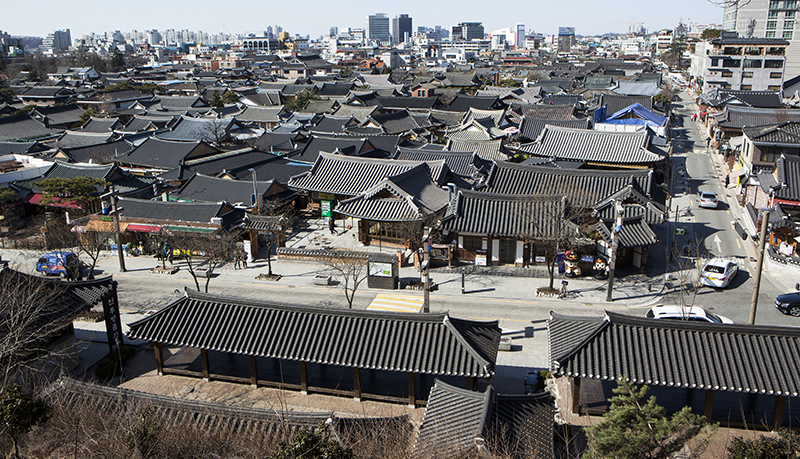
When I return from my visit to Jeonju, I always stop by a bakery café in Jeonju Station.
This is because the place is filled with the new tastes of Jeonju. First, I choose Handmade Choco Pie, which was made in Jeonju in 1978, by flavor, and a bag full of bread with the taste of Jeonju, including Bibim Bread and Tteokgalbi. Then, I add one or two bottles of Moju, a liquor made by boiling makgeolli together with 8 ingredients of Oriental medicine, such as ginger, jujube, licorice, ginseng, arrowroot, and cinnamon powder. When I get on the train with bags brimming with the tastes of Jeonju, the rich and harmonious taste of Jeonju fills the train as well.
Article. The Editorial Room Photo. Kim J
Extraordinary Taste in Ordinary
Jeonju is the place where you feel full even before you go on a trip. When you say you are going to a certain place, you will receive a recommendation saying, “If you go there, you must try this.” In Jeonju, you will get a variety of recommendations because there are many foods that represent Jeonju, such as bibimbap, bean sprout soup, baekban (combination meal), makgeolli, and omogaritang (spicy fish stew).
If you look at it this way, you can feel each and every taste of Jeonju, the home of flavors, but you also think, ‘I can eat them in my neighborhood.’
However, when you try these dishes in Jeonju, you will finally learn the extraordinary taste of Jeonju. When Jeonju is added in front of food menus, such as bibimbap, bean sprout soup, baekban, sundaeguk (blood sausage and rice soup), makgeolli, they taste better. This is the moment when the tastes of Jeonju, which became synonymous with food that can be found everywhere, become special.
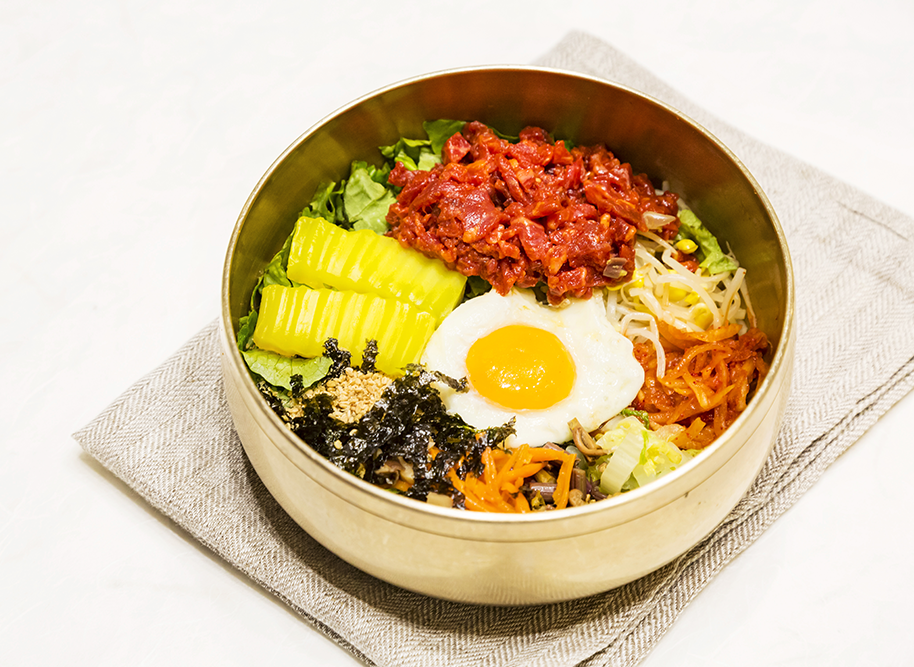
Top 10 Tastes of Jeonju and the Taste of Harmony in Jeonju
This special taste of Jeonju is closely related to “Top 10 tastes of Jeonju.” This means that there are 10 types of food ingredients grown in Jeonju. They are crab, hwangpomuk(mung bean jelly), false minnow, radish, water parsley, seocho, zucchini, young radish, bean sprout, and parasi(type of persimmon).
The diverse 10 tastes of Jeonju are referred as “harmonious tastes.” The examples include Jeonju baekban, which presents traditional dishes that are said to have been enjoyed by Jeonju natives around the four gates of Jeonju on a single table, and the makgeolli set table, presenting seasonal dishes that go well with makgeolli regardless of whether eaters are drinkers or non-drinkers, and, above all, bibimbap, and bean sprout and rice soup, the symbols of Jeonju.
When you think of Jeonju, the first food that comes to mind is bibimbap. Jeonju bibimbap, which was selected as one of the three great foods of the Joseon Dynasty, is made with about 30 ingredients. It is characterized by the addition of “hwangpomuk,” one of the 10 tastes of Jeonju.
Hwangpomuk refers to mung bean jelly made by using the Nokdupo Spring Water flowing from Omokdae in Jeonju, and coloring it yellow with gardenia water. Jeonju bibimbap is also characterized by using rice cooked with bean sprouts, also one of the 10 tastes of Jeonju.
In Jeonju, bean sprouts are grown by using Jeonju seomoktae. The trick is to grow them without rootlets. The soil and water quality of Jeonju is suitable for growing high-quality bean sprouts. It is said that the bean sprouts grown here are rich in iron, and have been used in various dishes since the ancient times to prevent endemic diseases.
This is probably the reason why the bean sprout soup is as famous as Jeonju bibimbap in Jeonju. According to the Jeonju City Hall, the origin of “kongnamulgukbap” comes from Jeonju, and there are two types: “Hwasik,” in which the rice and bean sprouts are put in an earthen pot and boiled hot with various seasonings, and “Nambu Market Style,” in which the rice is put in hot broth without boiling.
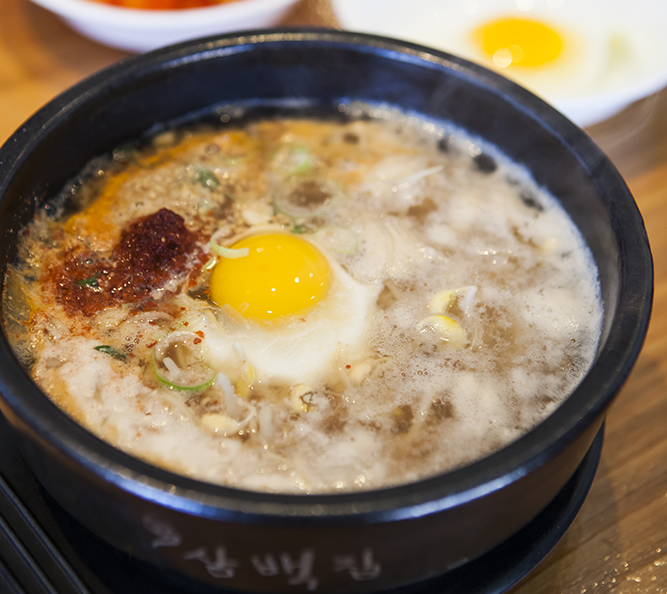
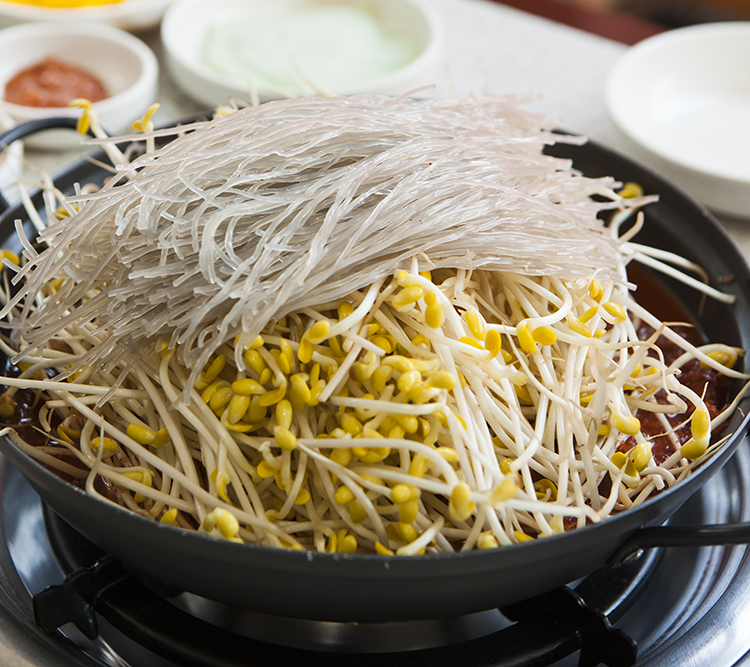
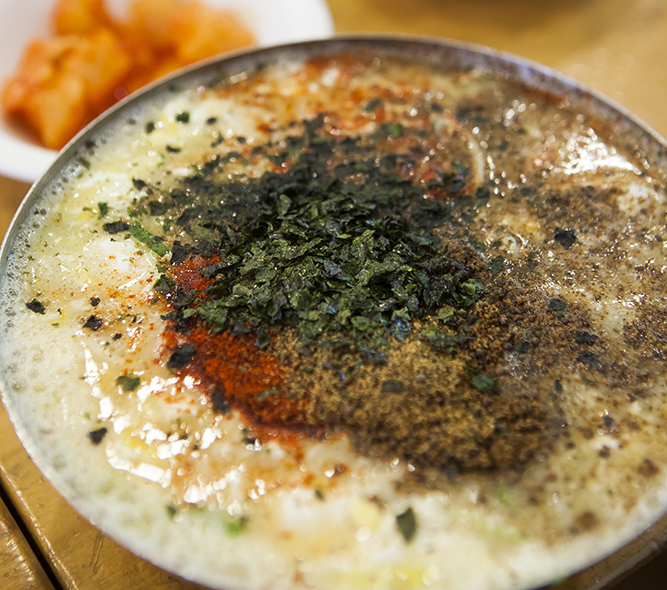
UNESCO Creative City of Gastronomy, Jeonju
Jeonju bean sprout rice and soup are a type of dish that left a pretty strong impression on me because I still remember being dazed by the hot taste that didn't cool down when I ate it.
I also worried about how to eat the poached egg and seasoned seaweed that came with it, about whether I should eat poached egg in the soup or pour the soup into the poached egg. I had another option after seeing an acquaintance from Jeonju cracking the yolk of a poached egg, and dipping the bean sprouts in the yolk. But, how about seasoned laver?
Perhaps it is my personal experience, but when I have Jeonju-style food, I worry about how to eat it, and strangely, I learn a new way of eating each time. Naturally, I also learn a new taste every time. Recently, I discovered a new taste from eating bean sprouts soup with salted squid. This is also the reason people anticipate new flavors when they go to Jeonju.
Similarly, it is fun to discover the new flavors of Jeonju as a genuine UNESCO Creative City of Gastronomy. This is partly because eaters learn new ways to eat, and the taste of Jeonju is constantly being developed and revised. The feeling I felt when I first encountered Jeonju Bibimpap was a novelty.
How about the taste of bibim noodles made with Jeonju bibimbap sauce? This is why I am already excited about my next visit to Jeonju. I heard about the restoration of the “Jeonju Gwanchalsa Bapsang(Governor’s Table)” in the news a while ago, and I’m also looking forward to this new Jeonju table.
Jeonju Hanok Village with a Korean Style
There is a place that everyone is recommending me to visit. It does not need a long introduction. Jeonju is such a place. When we say that we are going to Jeonju, we naturally include a visit to “Jeonju Hanok Village.”
Jeonju Hanok Village is the largest traditional hanok village in Korea, with about 700 hanoks clustered around Pungnam-dong, Jeonju. The Jeonju City Hall introduces it as “a place where important cultural properties, such as Gyeonggijeon Hall, Omokdae Historic Site, and Hyanggyo Confucian School, and 20 cultural facilities are scattered within, and is Korea’s representative travel destination filled with Han(韓: Korean) style, including hanok(house), hansik(food), hanji(paper), hansori(music), hanbok(clothes), and hanbang(medicine).”
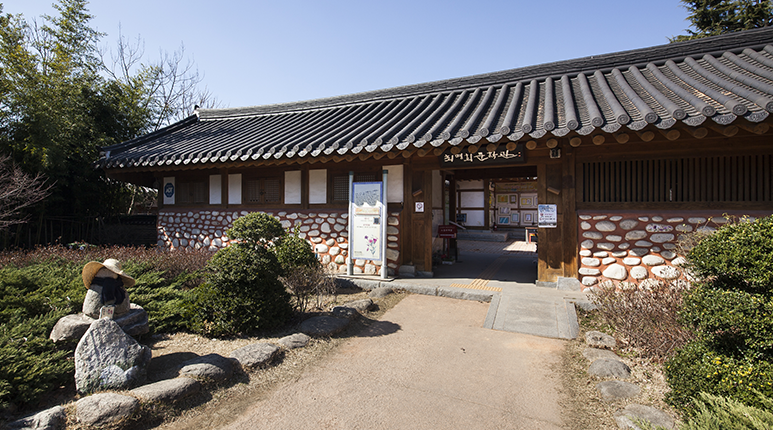
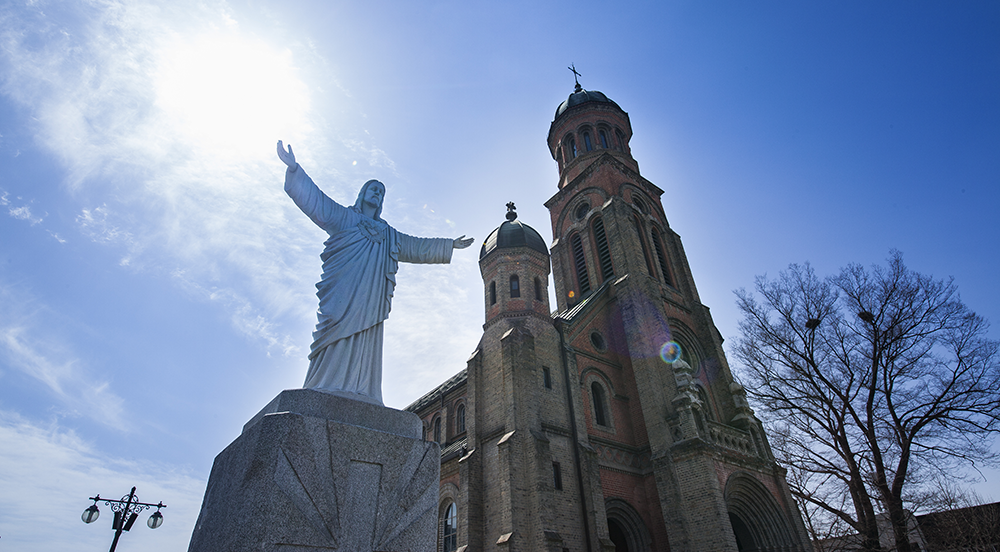
Cultural Relics in Hanok Village
Gyeonggijeon, King Taejo’s Eojin(portrait), Gyeonggijeon Jeongjeon, Hamabi(a notice made with stone table requiring riders to dismount), Jeondong Catholic Church, and its presbytery, Jeonju Hyanggyo, Omokdae, Imokdae, and Hanbyeokdang Pavilion.
Gyeonggijeon Hall is where the portrait of King Taejo, the founder of Joseon Dynasty, is located. It is also called “Jinjeon,” a palace where the portrait of a king is enshrined in the country. The majesty of Gyeonggijeon can be found in Hamabi, and it states, “Jijchagaehama japinmoodeukip(至此皆下馬雜人毋得入), meaning, “Whoever reaches Gyeonggijeon shall get off their horses, regardless of the high or low ranks, the nobles of their ranks, while outsiders are prohibited from entering.”
Omokdae is another place where the spirit of King Taejo lives on. This is where General Yi Seonggye of Goryeo held a triumphant feast on the way back from defeating Japanese invaders coming from Geumgang River and from Hwangsan Mountain in Namwon. How about feeling the spirit of Lee Seonggye, who climbed Omokdae and looked down at the scenery of the Hanok Village, when he recited Liu Pang’s “Daepunga(Wind Ode),” while reflecting on his ambition to establish a new country?
The majesty of the history of Jeonju Hanok Village can also be found in Jeondong Catholic Church. Jeon-dong, outside Pungnammun Gate in Jeonju, was where Catholics were persecuted and executed since the 18th century. The church was built by using the stones soaked with the young blood of martyrs and were taken from the fortress as a foundation stone. To commemorate the meaning of the martyrdom, Father Baudounet started the construction of the church in the early 1900s, and it was built by Father Poisnel, who designed the Myeongdong Cathedral in Seoul. You can fully feel its sublime majesty by standing in front of this Romanesque church, which was finished with gray and red bricks.
Cultural Facilities in Hanok Village
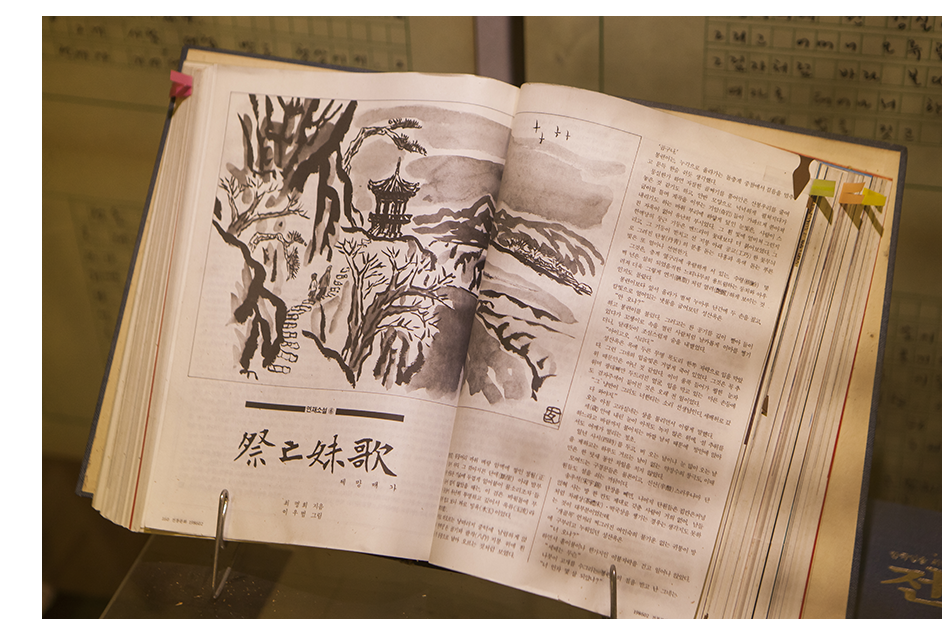 At Jeonju Hanok Village History Hall, an exhibition hall that introduces the history and origins of Jeonju Hanok Village, Gangam Calligraphy Hall, Seonbi Culture Hall, Choi Myeong Hee Literary Museum, Jeonju Traditional Korean Liquor Museum, Jeonju Kimchi Cultural Center, Jeonju Fan Museum and Wanpanbon Culture Center, you can feel and experience first-hand the diversity of culture.
At Jeonju Hanok Village History Hall, an exhibition hall that introduces the history and origins of Jeonju Hanok Village, Gangam Calligraphy Hall, Seonbi Culture Hall, Choi Myeong Hee Literary Museum, Jeonju Traditional Korean Liquor Museum, Jeonju Kimchi Cultural Center, Jeonju Fan Museum and Wanpanbon Culture Center, you can feel and experience first-hand the diversity of culture.
Among them, Wanpanbon Cultural Center is the perfect place for the autumn reading season. It is where we can shed a new light on the fact that Jeonju was the city that protected the Chronicles of the Joseon Dynasty, an important place of the publishing culture during the late Joseon Dynasty, and a publishing city that was the cradle of documentary culture. Wanpanbon refers to old books and their wooden editions published in Jeonju(Wansan), the former capital of Jeolla-do. For reference, Jeonju has its own typeface called “Jeonju Wanpan,” and it is said that it is rare for a city to have its own typeface.
For our ancestors, fans were a means of conveying greetings and feelings through poetry and paintings. The meaning of Jeonju, the city of publication, can be found in the Jeonju Fan Museum. Moreover, the Jeonju fan is made of Jeonju Hanji, which is recognized for its excellence at home and abroad even today.
Of course, the Choi Myung Hee Literary Museum, celebrating the life of writer Choi Myung Hee, who wrote the epic novel, <Honbul>, cannot be left out. Here, you can read the handwritten manuscript of <Honbul>, which was written on 12,000 pages over the period of 17 years, and the calm handwriting contained in the manuscript and the traces of gradual work quietly summoned the artist's mind and anxieties at that time.
Meanwhile, Gyo Dong Museum of Art, Memory Museum and Luielle Hat Culture Center, and Jeonju Nanjang are also famous attractions in Jeonju Hanok Village. Jaman Mural Village, which was originally created by refugees during the Korean War, became famous for its beautiful murals. If you are traveling to Jeonju Hanok Village, you are likely to have a photo taken with the Jaman Mural Village murals in the background.










